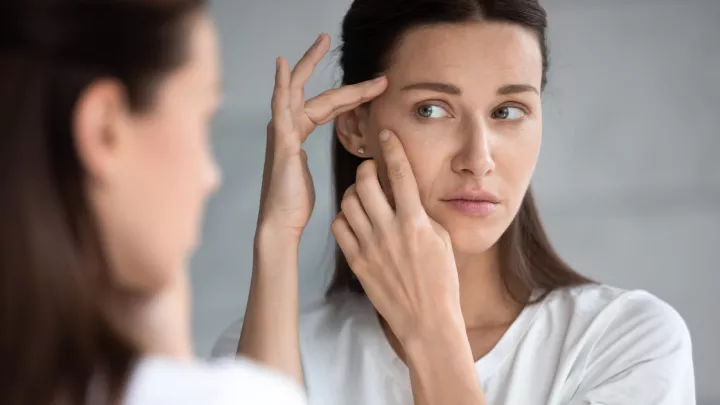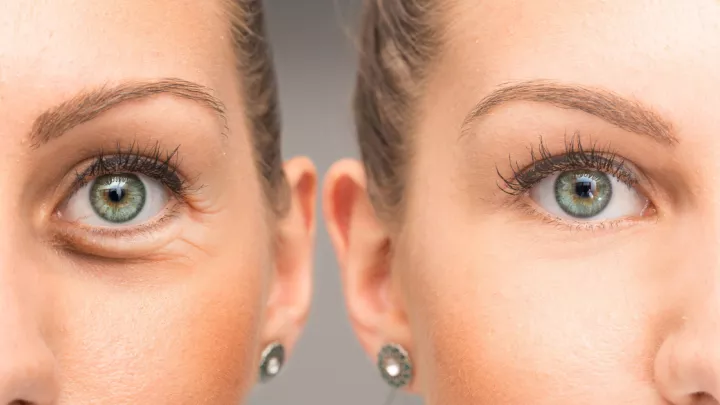10 common questions about dermal fillers

Do you ever look in the mirror and wish you could do something about those pesky lines and wrinkles? Do you desire a more youthful appearance without having an invasive procedure? A dermal filler may be your answer.
Fillers are not meant to create a completely different look. In the hands of an experienced medical professional, a dermal filler can enhance your own features with beautiful results. The first step is to think about what areas you would like treated and consider your goals.
Here's answers to 10 of the most common questions people are asking about dermal fillers.
1. What are dermal fillers?
Dermal fillers are injectable treatments used to restore lost volume for a more youthful appearance. Fillers can be used on the face to soften wrinkles and creases, restore fuller lips and even smooth out the skin on your hands.
With instant results, dermal fillers offer a general rejuvenation to create lift, plump and smooth skin. "Dermal fillers are gel-like substances that are injected beneath the skin to restore volume," explains certified physician assistant Anne Storey, PA-C, Facial Plastic and Reconstructive Surgery at Village Pointe Health Center. "Dermal fillers are made up of ingredients that are either naturally found in your body such as hyaluronic acid and calcium hydroxylapatite, or a biocompatible substance such as poly-L-lactic acid or polymethylmethacrylate."
2. Are there different types?
Dermal fillers come in various forms, including Juvederm®, Restylane®, Radiesse®, Sculptra® and Bellafill®. The most common fillers consist of non-animal hyaluronic acid. Other fillers consist of a synthetic suspended in aqueous gel, but also naturally occurring and naturally degraded by our own body.
3. What determines what dermal filler is best?
The choice of which filler is best depends on your treatment goals and varies from person to person. "The location of where the filler is to be injected, how long you want it to last and existing allergies determine which type is best for the patient," adds Storey.
How long do dermal fillers last? Can they migrate?
Most dermal fillers can last anywhere from six months to two years based upon which filler is selected. Dermal fillers do not migrate to other areas.
4. Are there risks or side effects?
Overall, dermal fillers are relatively safe and effective. The most common reactions may include redness, swelling, bruising, itching or tenderness. For most, these mild reactions resolve within a week or so. The downside? Most fillers are not permanent so additional treatments may be needed.
Who should not get a filler?
- If you are allergic to any of the components in the filler
- If you are pregnant or breastfeeding
- If you take blood thinners or an immunosuppressant
- Exercise caution if you have a history of severe scarring or have a pigmentation disorder
5. Can dermal fillers be used to correct acne scars? Can they cause cold sores?
"Yes, dermal fillers can be used to correct acne scars, however, based upon the scars themselves, they may not be fully cured," adds Storey. "An injection could cause a cold sore as the virus that causes cold sores can lay dormant in a person's body until reactivated, which can be triggered by stress or trauma."
6. Are dermal fillers better than Botox?
Not necessarily. Dermal fillers and Botox address similar but also different areas of concern. In some instances, a combination can work together to achieve the desired results. Because both are useful, a consultation is necessary to determine what is best for you.
7. Are dermal filler injections painful?
"Dermal fillers made with hyaluronic acid are mixed with lidocaine to help ease the discomfort," says Storey. "Other dermal fillers do not contain any anesthetic and can be mildly painful. However, a topical anesthetic can be applied to the treatment area before injections to help ease the pain."
8. What can a patient expect during treatment?
Before the procedure
You will meet with your medical professional to discuss areas of concern and goals of treatment. The filler will be selected based upon the initial consult.
During the procedure
Small aliquots of filler are applied in several locations. The area may be massaged to help contour the filler to fit the specific location. If you experience tenderness with the injections, an ice pack may be used to help ease the pain and swelling.
After the procedure
You will be instructed to take it easy for 24 hours, forgo strenuous exercise, and refrain from excessive sun exposure to help decrease redness and irritation following the procedure. You will be instructed to refrain from nonsteroidal anti-inflammatory drugs (NSAIDs) for one week to help reduce the risk of bruising and refrain from using RetinA on your face for several days to lessen prolonged redness.
9. Are dermal fillers expensive?
The cost depends on which filler is chosen and the total amount of filler used. To help you estimate the cost, discuss your specific goals and options with your health care provider.
10. Can dermal fillers be removed?
Most fillers can be removed, but not all. What the filler is made of determines if they are naturally absorbed by the body or permanent. "Those that can be removed are Restylane®, Juvederm®, and Belotero® via injection of hyaluronidase," explains Storey. "The fillers made of hyaluronic acid will bind and retain water molecules, so the areas treated could become a little fuller after the initial injection."
Ready to see how dermal fillers may be a solution for you? Our team offers an array of cosmetic and reconstructive procedures focusing exclusively on the faceand neck. Call 402.559.5700 to make an appointment.







